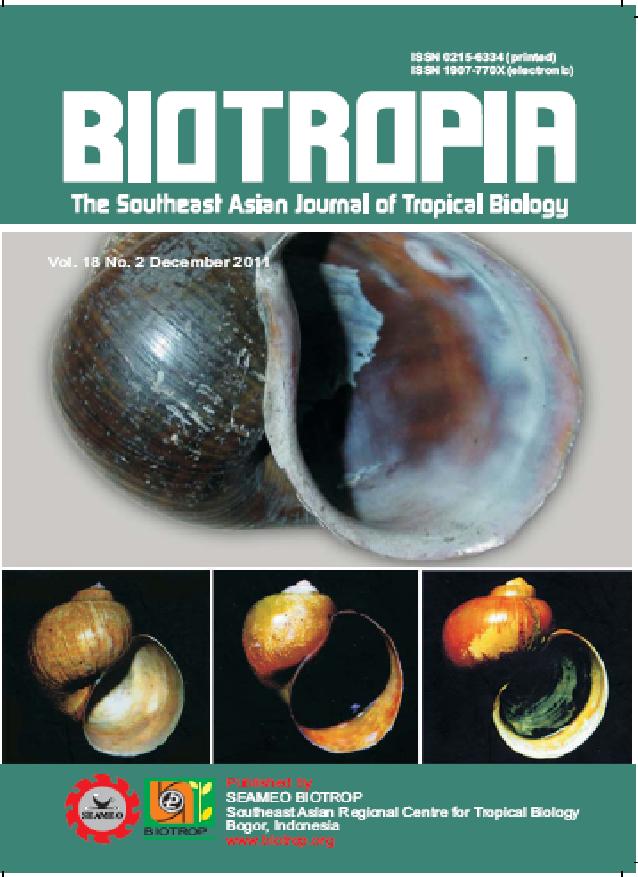
Tags
OCCURRENCE OF ARBOREAL-CLIMBING GRAPSIDS AND OTHER BRACHYURANS IN TWO MANGROVE AREAS OF SOUTHERN LUZON, PHILIPPINES
Content Language : English

Despite the obvious importance to ecosystem functioning, the most prominent groups belonging to the Grapsidae are generally regarded as less studied in the Philippines. In this study, the occurrence of arboreal-climbing grapsids and other brachyurans associated with the mangals of Quezon and Catanduanes was considered including some aspects on climbing, burrowing and feeding behaviour of selected grapsids represented by Hemigrapsus, Pseudograpsus and Metopograpsus. The non-grapsoid taxa are represented by Varunidae (Ptychognathus), Portunidae (Charybdis, Portunus, Scylla, Thalamita); and Eriphiidae (Epixanthus). Metopograpsus latifrons (White, 1847) [Grapsus] is an exclusive mangrove tree climber (EMTC), while Pseudograpsus elongatus (A. Milne Edwards, 1873) is described here as occasional mangrove tree climber (OMTC). Hemigrapsus (Hemigrapsus) penicillatus (De Haan, 1835) [Grapsus (Eriocheir)] is a non-mangrove arboreal–climbing species (NTC) only seen on crevices of the mangrove areas. P. elongatus creates burrows most often than M. latifrons. Likewise, the study provides information on the presence of the portunid orange mud crab (Scylla olivacea); the green mud crab (S. paramamosain); the varunid (Ptychognathus altimana); and extremely abundant xanthiid crab, Epixanthus dentatus in the mangroves of Catanduanes but not in Pagbilao, Quezon.
Link

This work is licensed under a Creative Commons Attribution-NonCommercial-NoDerivatives 4.0 International License.
